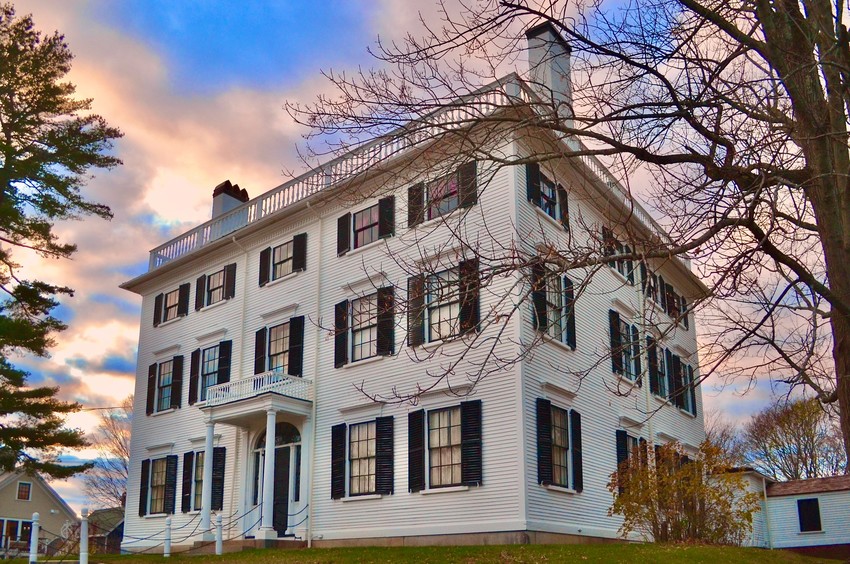 Rundlet-May House
Rundlet-May House
Rundlet-May House
Comfort, Convenience, Early Innovations
In 1807, on a man-made hill rising above Middle Street in Portsmouth, James and Jane Rundlet built their stately neoclassical-style home just far enough outside of town to allow them to plan orchards, flower beds, a carriage barn, and working yard. Equipped with the latest technologies, the house was large enough to accommodate their growing family, and designed to run efficiently and offer luxury and comfort to all those in the household. From a Rumford cooking range with an elaborate venting system, third floor smoke chamber, and a set kettle for heating water; to an early coal-fired central heating system; each detail at the Rundlet home was carefully constructed to impress. The furnishing throughout the house, including the best examples of Portsmouth furniture, also make this an elegant house dedicated to style and fashion.
Rundlet-May House represents four generations of one family, the Rundlets and Mays, who continuously occupied the space until it was donated to Historic New England in 1971. The house tells a story of change over time; the Rundlet’s Rumford roaster is in the same room as the May’s General Electric range, and an eighteenth-century inkwell is found above a cable television outlet. The house challenges us to identify the changes, both technological and decorative, and develop an understanding of when and why they occurred.
James and Jane Rundlet
James Rundlet (1772-1852) was born in Exeter, New Hampshire, the son of a yeoman who owned a successful blacksmith shop and a slaughterhouse, as well as a shop attached to his house. James attended the newly-formed Phillips Academy in Exeter where he concentrated on sciences and technology studies. At twenty-two, he came to Portsmouth and began as a commission merchant, and delved into commercial enterprises such as importing limes from the West Indies. He then imported and sold textiles, and eventually opened his own dry goods shop on Market Street. His investments in two woolen mills, in Amesbury, Massachusetts and Salmon Falls, New Hampshire, boosted his fortune when he was commissioned to provide uniforms for the War of 1812. When he died, he was one of the wealthiest businessmen in Portsmouth. He married Jane Hill (1774-1849), the daughter of a successful Portsmouth blacksmith. Just eleven months after their marriage in 1795, Jane Rundlet gave birth to their first child, Harriet (1795-1840). Twelve more children followed, some of whom did not live to adulthood: Caroline (1797-1880), William (1800-1846), Elizabeth (1802-1810), Edward (1804-1805), Edward (1805-1874), John Samuel (1807-1835), George (1808-1830), Alfred (1811-1851), Elizabeth Jane (1813-1839), James (1815-1855), Louisa Catherine (1817-1895), and Frances Matilda (1824-1834).